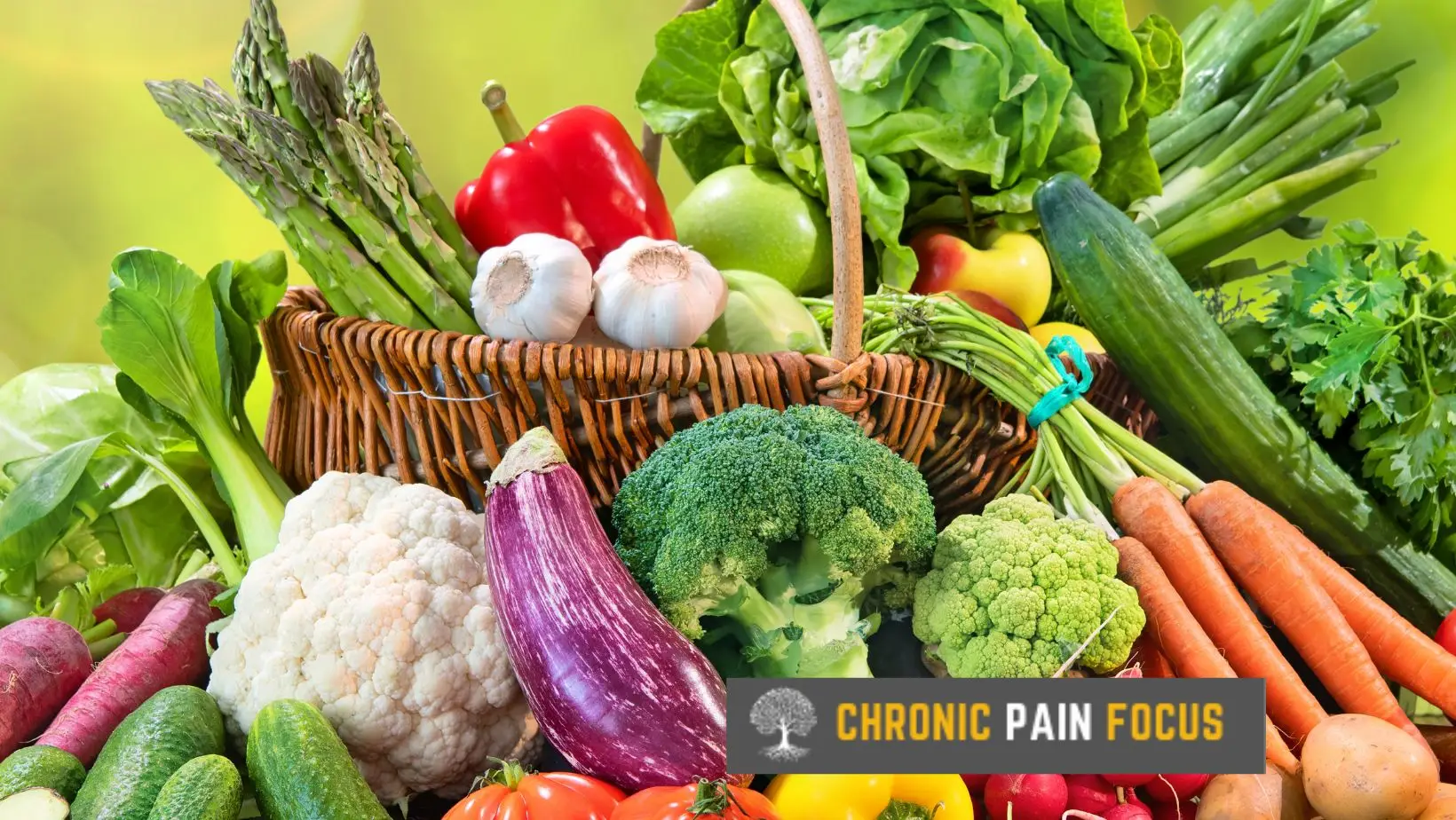

A Dietary Approach To Chronic Pain
For many battling chronic pain, living a full life is akin to traversing a rocky terrain in a storm. Every step forward can feel thwarted by an invisible yet inescapable force—the pain. However, beyond the conventional arsenal of medications and therapies, there hides a powerful weapon that might not obliterate the enemy but could, indeed, offer a formidable defense strategy: good nutrition.
Why Nutrition Matters More Than You Think
When speaking about chronic pain management, the narrative often gravitates towards pharmaceutical solutions. But what if initiating a culinary revolution within your very kitchen holds the key to unlocking a significant reduction in chronic pain symptoms? Science posits that it very well could.
Irrespective of the pain’s origin—be it arthritis, fibromyalgia, or an injury—diet plays a direct role in inflammation. Chronic, low-grade inflammation is a feature of many painful conditions. Whole foods, like nuts and seeds, are teeming with anti-inflammatory properties. Contrastingly, the commonly revered fast foods and sugary treats seemingly stoke the inflammatory fires.
There is a vibrant interplay between nutrient density and our perception of pain. Diets rich in antioxidants, found in fruits and vegetables, can potentially dampen the psychological impact of pain. Conversely, foods dense in trans fats and refined sugars might escalate the intensity of pain.
Crafting Your Pain-Relief Plate
Transitioning to a pain-relief-promoting diet is not an overhauled directive to shun pleasure but an invitation to interlace your daily meals with elements strategically designed to combat pain.
The Spectrum of Possibility
Instead of restricting yourself, look to enrich your palate with brighter hues that are chock-full of healing potential—think greens, blues, and reds in the form of leafy greens, berries, and beetroots. These food items house phytochemicals that act as an internal battalion against inflammation.
Protein and Pain
Amino acids, the building blocks of protein, are integral in the repair and rejuvenation processes within our bodies. High-quality sources of protein can aid in the management of pain by supporting muscle health and other repair mechanisms.
A Call to Action for Chronic Pain Sufferers
Navigating the culinary cosmos with an aim to alleviate chronic pain is a personalized odyssey. What works as a pain-buster for one might not have a similar effect for another. Yet, the empirical wisdom that lies at the nucleus of this dietary approach is profound: good nutrition can be a catalyst for change in the chronic pain paradigm.
The Virtues in Vitamins
Vitamins, often touted for their role in immune support, are equally lauded for their potential to modulate pain. Vitamin D from sunlight or supplementation can be pivotal for those with musculoskeletal pain. The B-complex vitamins, especially B12, may offer nerve-comforting effects.
Fostering a Mindful Relationship with Food
Implementing change, especially when the implication is one’s daily sustenance, is seldom facile. It calls for a newfound alliance with food—a mindful relationship that acknowledges nourishment as a choice operating beyond the confines of appetite whims.

An Unveiled Spark of Hope
Renowned American chef James Beard once remarked, “Food is our common ground, a universal experience.” In the realm of chronic pain management, this common ground could blossom into a haven for individuals seeking a reprieve from the arduous path of pain.
With every bite you steer towards healing, with every sip of a vibrant smoothie or infused water, you send a silent but steadfast message to your pain—you are not resigned to being the captive of suffering, you are a chronic pain warrior forging new beginnings with every nutrient-rich morsel.
The Time To Eat Well Is Now
For a concept as vital as that of nutrition’s role in chronic pain, there’s no sense in postponing the exploratory voyage. Whether you’re in the throes of initial diagnoses or have been entrenched in long battles, the sustenance you offer your body can serve as a gentle but persuasive agent in your arsenal, marching in step with medication and therapies.
Armed with the knowledge that every meal is an opportunity to mend, you stand at a crossroads. It’s not about radical transformations or dogmatic dietary adherence; it’s about infusing your everyday choices with an intent that resonates with a singular goal—chronic pain management through nourishing the body with foods that heal.
Take the first step today. Try a new recipe rich in antioxidants. Savour the amalgamation of flavours in a well-seasoned bowl of quinoa. The door to a pain-reduced future may just be a pantry away.
How Proper Nutrition Eases Chronic Pain
Reducing Inflammation
Inflammation is our body’s natural response to injury and infection. When it’s activated for extended periods, it can lead to chronic pain. A diet high in anti-inflammatory foods, such as fatty fish, nuts, berries, and leafy greens, can help in reducing this chronic inflammation, thereby reducing pain.
Supporting the Nervous System
The nervous system, particularly in cases of neuropathic pain, can benefit from specific nutrients. Omega-3 fatty acids, for example, found in fish and flaxseeds, can help support nerve function. Deficiencies in key nutrients, such as B vitamins, are also implicated in nerve damage and consequent pain.
Balancing Blood Sugar
Fluctuations in blood sugar levels can trigger the release of inflammatory chemicals, leading to pain. Eating small, balanced meals that contain protein, healthy fats, and complex carbohydrates can help maintain stable blood sugar levels and reduce these painful spikes.
Weight Management
Obesity is a significant factor in many chronic pain conditions. A nutrient-dense, portion-controlled diet can aid in weight management, alleviating pressure on joints and reducing strain on the body.
Key Nutrients for Chronic Pain Relief
Certain nutrients have been highlighted for their potential role in managing chronic pain.
Omega-3 Fatty Acids
Found in fatty fish, flaxseeds, and walnuts, these essential fats have powerful anti-inflammatory properties.
Turmeric
This brightly colored spice, a staple in many anti-inflammatory diets, contains curcumin, a compound with potent pain-relieving and anti-inflammatory effects.
Vitamin D
Deficiencies in Vitamin D are associated with increased pain sensitivity. Sunlight is an excellent source, as are fortified foods and supplements.
Magnesium
Magnesium helps muscles and nerves function properly and is involved in numerous chemical reactions in the body that alleviate pain.
Probiotics
For those with digestive issues linked to their pain condition, probiotics found in foods like yogurt can help heal the gut and reduce systemic inflammation.
Implementing a Pain-Reducing Diet
Adapting to a new way of eating can be challenging, especially when dealing with pain. However, small, incremental changes can lead to significant improvements.
Start by Eliminating Trigger Foods
Foods like sugar, processed foods, and trans fats are known to promote inflammation. Begin with eliminating or reducing these from your diet and observe if there are any improvements in your pain levels.
Incorporate Anti-Inflammatory Foods
On the flip side, load up on foods with anti-inflammatory properties. Cook with olive oil, snack on nuts, and pile your plate with a variety of colourful fruits and vegetables.
Keep a Food Diary
Tracking your meals and any associated pain can help you identify patterns and pinpoint which foods are helping or hindering your pain management efforts.
Consult a Professional
A registered dietitian can help you tailor your diet to your specific condition, ensuring you get the right nutrients and calorie balance for your health goals.
Never Too Late to Reap the Benefits
It’s never too late to adjust your diet in favor of your health. The body’s capacity for repair and rejuvenation is ongoing, and you can support this process by providing it with the proper nourishment. Even those who have lived with chronic pain for years can experience improvements by making nutritionally sound choices.
Changing your diet is not a magical cure, but it’s a powerful tool that, when combined with other therapies, can help in the management of chronic pain. It’s about creating an environment in the body that encourages healing and reduces the risks of inflammation and the associated pain that comes with it. Integrating good nutrition is one step towards leading a fuller, more comfortable life.
For anyone dealing with the challenges of chronic pain, exploring the role of nutrition could open up a new avenue for relief. It’s a holistic, proactive approach that puts healing in your hands, quite literally. By empowering yourself with the knowledge and tools to make informed dietary choices, you can take significant steps towards managing your pain and promoting overall wellness.
Pain is a complex issue with multiple causes and influences, and each person’s experience is unique. But by recognizing the potential of food as medicine, you can create a diet that supports your body’s natural healing processes. In the battle against chronic pain, the fork may just be as mighty as the scalpel or the pill.